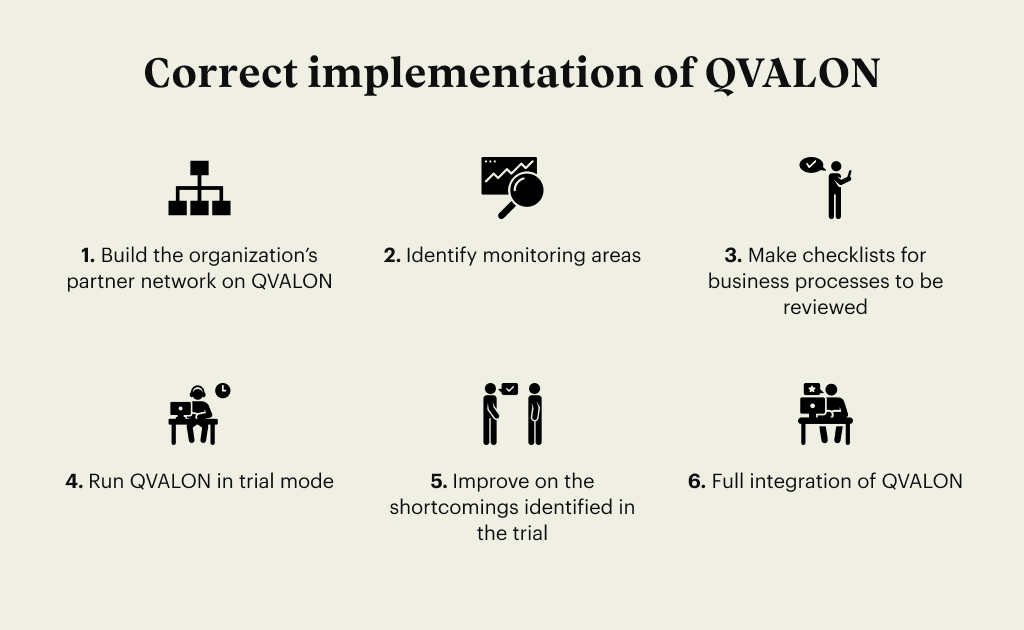Qvalon Blog article content
It is rare for an organization to be completely self-sufficient for all its operational activities. Companies usually outsource parts of business processes to third-party vendors on a contractual basis. In some cases, the entire business process itself is sub-contracted. For example, the customer support process of large organizations based in English-speaking countries of North America and Europe is often outsourced to specialized businesses based in South-East Asian countries.

Such partnerships allow businesses to remain focused on their core competencies. A biotech company can remain dedicated to its research, which is its specialization while entrusting the safety of its facility and employees to security services. It also saves expenses. If a company wants to provide better customer support, then instead of spending on setting up the whole infrastructure for it, they can simply partner with a dedicated customer support company that already has all the capabilities ready for use.
As an organization expands, it gets into partnerships with more companies because of two reasons. The outsourced work is too much for a single vendor. Or, more business processes are outsourced. In both cases, more collaborations are explored.
There are scenarios when different vendors providing the same service, have separate performance parameters to fulfill as per their respective contracts. It can be tedious for an organization to ensure that all vendors show high compliance to their agreement. The situation will be unfathomable if the number of vendors exceeds a certain threshold. The obvious solution is to implement a system that can be used to monitor the partner network and provide partner companies with recommendations on how to improve their joint activities. All of this and more can be done with QVALON.
Monitoring that benefits everyone
One of the simplest and most convenient tools for monitoring any business process is checklist. Using them even in the classic tabular form provides a lot of information regarding the operational activities of the company. With QVALON, checklist efficiency increases multiple times due to quicker information flow and deeper insights.
When QVALON is used to review partnerships, it benefits all the entities involved. After Burger King started reviewing the performance of contract-based cleaning companies with QVALON, the restaurant chain received better quality of work. The cleaning companies identified their own shortcomings and growth points which helped them fulfill expectations conveniently. The result is that Burger King now saves 9% on cleaning costs since association with QVALON. MODIS is another example, where the review of contract-based security companies via QVALON improved their efficiency. Eventually, MODIS now saves 7.5% on security costs, with a 5% reduction in in-store losses.
For QVALON to effectively monitor partner networks and benefit all entities involved, its proper implementation is vital.
Correct implementation of QVALON

For any system to provide the best results, it needs to be deployed in an accurate way. For QVALON, there are six convenient steps to be followed for its successful integration within the organization and its partner network.
-
Build the organization’s partner network on QVALON.
-
Identify monitoring areas.
-
Make checklists for business processes to be reviewed.
-
Run QVALON in trial mode.
-
Improve on the shortcomings identified in the trial.
-
Full integration of QVALON.
However, one possible situation with this approach can undermine all the good work. Let us take an example from our experience.
A company associated with QVALON to effectively monitor their partner network. The integration was done as per the steps recommended above and the company started to see the initial positive results. Everything went as per plan until the full integration when there was an unforeseen issue.
Partner companies did not fully understand why QVALON was being integrated, the benefits all entities will receive from it, hence they refused to use it in their operational activities. They could do so because in partnership agreements there was no mention that during the contract period such technological changes can be made.
The lesson here is that a company cannot single-handedly make changes to its partner network unless it is mentioned in partnership agreements. Even if it is, still, any change must be discussed with partners so that their concerns are heard and misconceptions are resolved. The partners will feel valued and they will know how to fully use QVALON which helps provide even better results.
Discuss all concerns in advance
The first thing to avoid such a predicament is to get the partners on board before the test period. Even if they unanimously refuse the change, the company would save time, effort, and resources on testing QVALON.
In order to implement any innovation, it must be presented correctly. If in the initial stage itself, a company takes efforts to educate the partners about QVALON’s benefits, their reaction would be different. The crucial thing is to impart confidence regarding QVALON. That it is not a system for stringent performance monitoring, based upon which unjustified payment deductions will be made. But it is the system through which partners can,
-
Find bottlenecks in the operational processes, correct them, and make them more efficient for both parties.
-
Spot growth opportunities that would further improve performance.
At QVALON, our team delivers a personalized, simple, and cost-effective approach to grow your and your partner’s business. Connect with us to know more.



